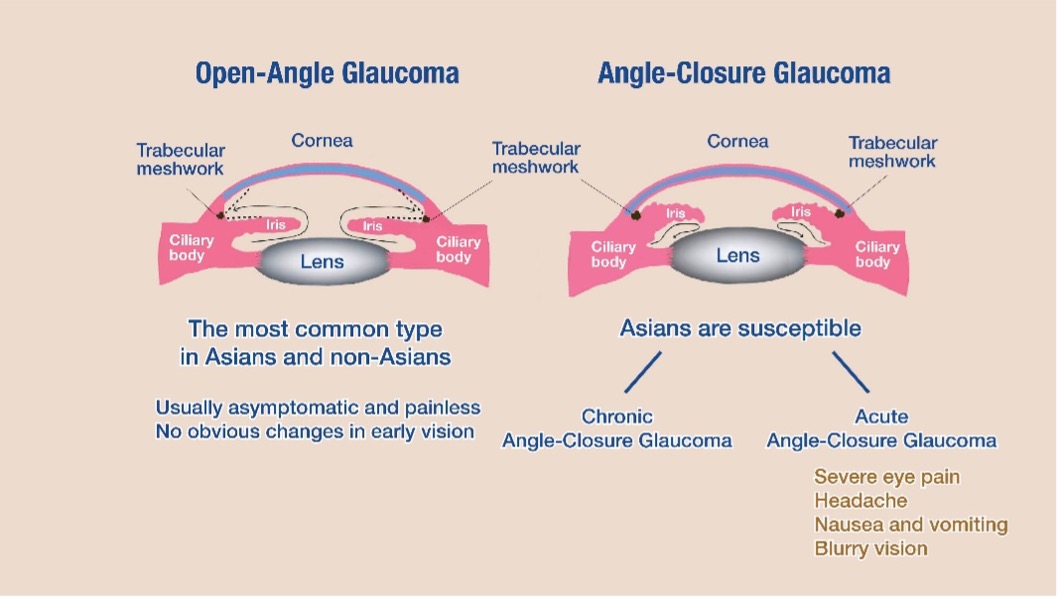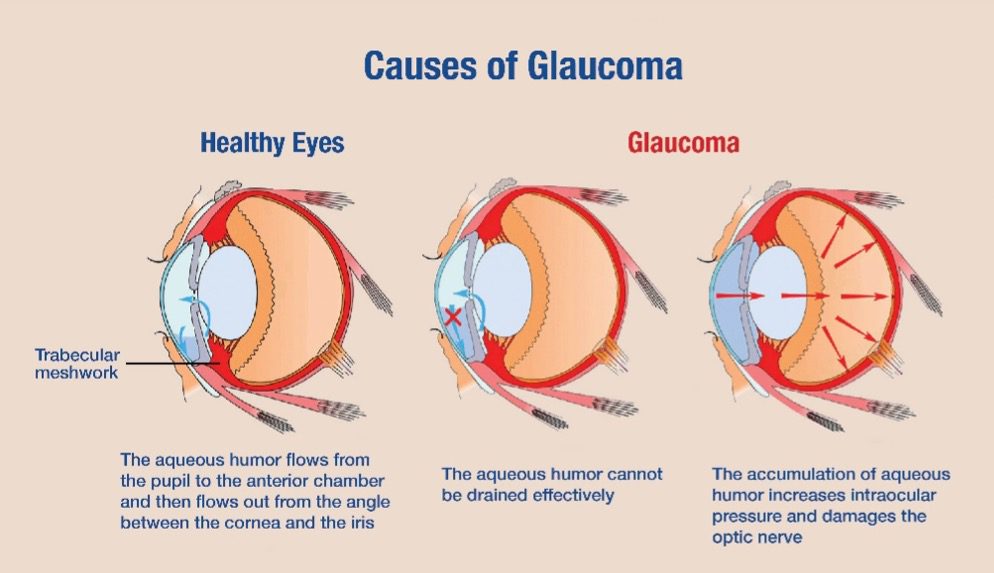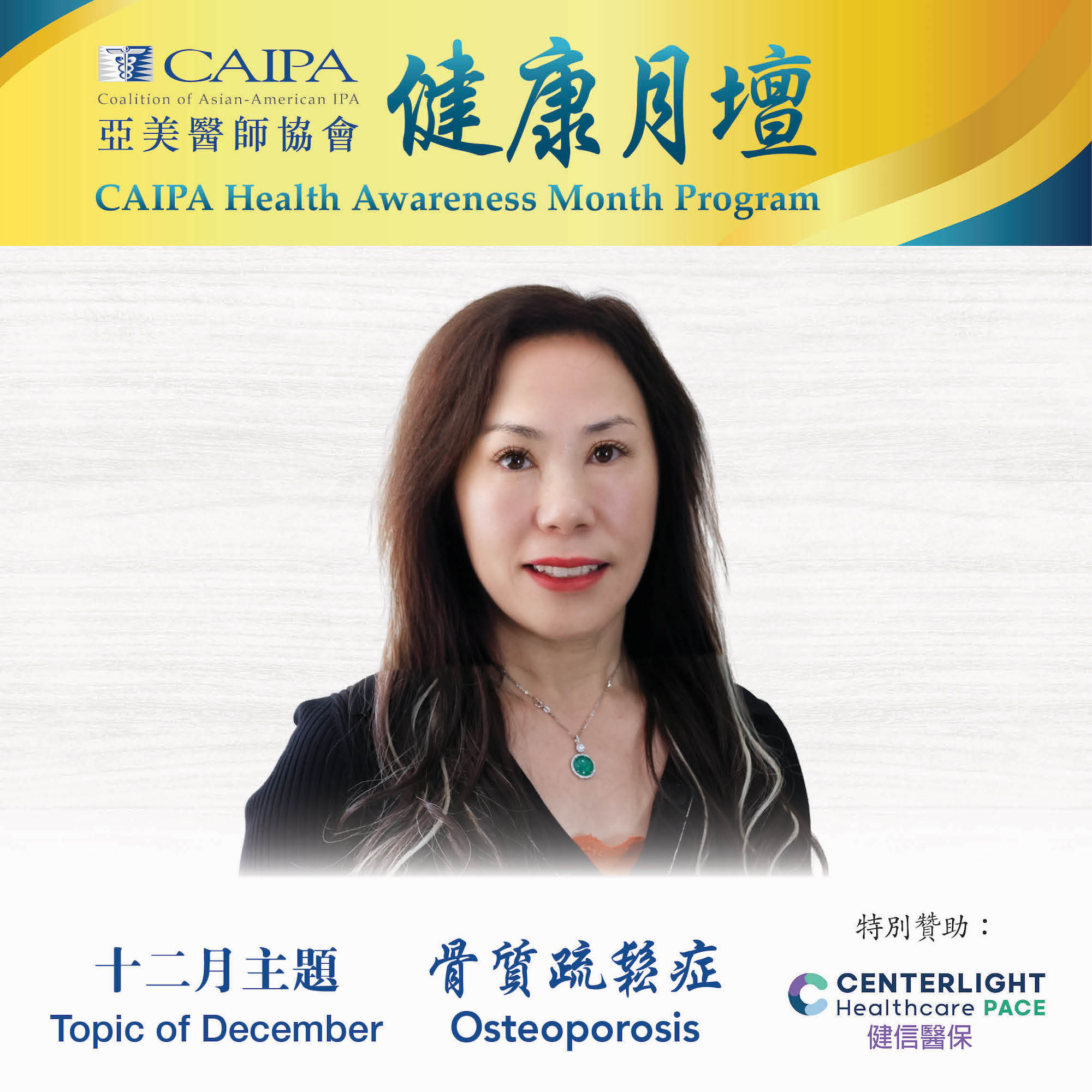Glaucoma
Participate in our quiz event for a chance to win some GREAT prizes!
What causes your eye health to deteriorate? Are you at risk for a potentially blinding disease? We will be answering these questions and more as we dive into our first topic of the year: Glaucoma.
What Is Glaucoma?
Glaucoma refers to a group of eye diseases that damage the optic nerve. The optic nerve is located at the back of your eye, which transmits visual information from the retina to your brain so you can see. If left undetected, the damage can lead to irreversible vision loss and even blindness. Ophthalmology Specialist and CAIPA board member Dr. Bingjing Roberts notes, “This disease is more common in diabetic patients…It cannot be cured completely, but it can be effectively controlled.” She also emphasizes how getting a yearly comprehensive eye examination and actively cooperating with the treatment is key to maintaining healthy vision.
Types of Glaucoma
There are many different types of glaucoma, including those caused by other medical conditions (Secondary Glaucoma) and those that are not (Primary Glaucoma). The two main types fall under the latter:
Open-angle glaucoma: the most common type in Asians and non-Asians, which manifests as a painless build-up of pressure in the eye. Fluid is produced in the eyes. At the right pressure, it usually flows out slowly through a channel. In this case, if the pressure of the eye is blocked, fluid will accumulate, causing a gradual increase in intraocular pressure.
Angle-closure glaucoma: also known as “closed-angle glaucoma” or “narrow-angle glaucoma” found commonly in Chinese and East Asian populations, divided into chronic and acute types. The iris (the colored part of the eye) blocks the drainage angle, causing fluid to accumulate in the eye and a sharp increase in intraocular pressure. If not looked at carefully, patients can lose sight in just a few days. If you suddenly have the following symptoms, please see a doctor or go to the emergency room immediately:
- Severe eye pain
- Red eye
- Headache
- Nausea and vomiting
- Blurry vision
Many forms of glaucoma occur slowly with no early symptoms. So, people are often unaware that they have the disease.
Causes and Risk Factors
There are a number of reasons and conditions that cause glaucoma, the main one being elevated eye pressure. Lowering intraocular pressure can help prevent vision loss caused by glaucoma. However, some people with normal intraocular pressure are also at risk. You can also develop it due to a family history of glaucoma or even from serious eye injuries.
While the disease can target anyone, here are some other groups that may be at a higher risk:
- The elderly (over the age of 40-60)
- African, Hispanic or Asian heritage
- Long-term users of steroid drugs
- People with corneas that are thin in the center
- People with diabetes, migraines, high blood pressure and/or low blood circulation
How Can You Prevent Glaucoma?
As of now, you cannot prevent glaucoma itself. But what you can do is delay the onset or prevent the damage from getting worse. Here’s how:
- Make an appointment with your ophthalmologist/eye doctor for a comprehensive dilated eye exam:
- Helps catch glaucoma early
- Should be done once every 1-2 years for higher risk groups past age 35
- A combo of several tests, including Tonometry, Gonioscopy, Ophthalmoscopy, Perimetry, Pachymetry
- Develop healthy habits, like exercising regularly, controlling your blood pressure and avoiding smoking
- Wear safety glasses and goggles to protect your eyes
- Speak with your family about what steps to take, especially if one or two members have been diagnosed with the disease
Treatments
There are different types of treatments for glaucoma, the purpose of which is to reduce intraocular pressure and prevent further damage to the optic nerve and maintain the status quo. Please discuss your treatment options with your doctor and start immediately:
- Medications (eye drops or oral medications)
- Laser Treatment
- Surgical treatment
According to Dr. Roberts, the treatment of glaucoma is the result of the joint efforts of doctors and patients.
Although glaucoma is a serious disease, if the patient can actively cooperate with the doctor’s treatment, the condition can be controlled. During the process:
- The patient must take medicine regularly according to the doctor’s instructions
- The patient must do regular eye examinations with follow-up visits
Vision impairment can take a toll on someone’s life, both economically and mentally. That is why it is so important to get regular checkups, testing and follow any necessary treatment once identified to maintain and preserve our eyesight.
For more updates and information, please follow our social media and visit the CHAMP page.








